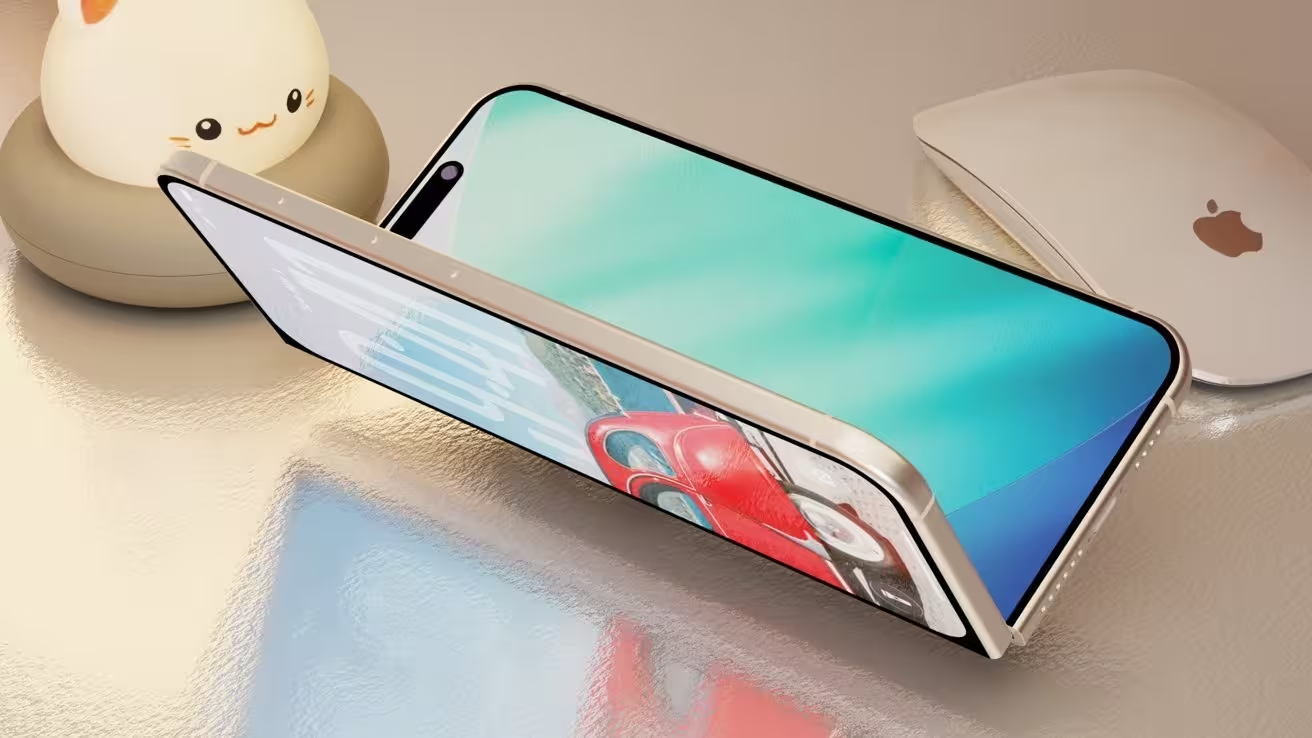5 Minutes
Apple’s foldable challenge: reworking display architecture
The flexible design of the upcoming iPhone Fold has pushed Apple into significant engineering trade-offs. Building a device with a foldable inner display introduces the risk of long-term creasing at the hinge, and Apple has reportedly adjusted core display technology to reduce that visible fold over time.
From on-cell to in-cell: what's changing
According to reporting in Bloomberg's Power On newsletter, Apple has shifted from an on-cell touch sensor layout to an in-cell design for the Fold's internal panel. These terms describe where the touch sensor array sits inside the multilayer display sandwich.
In an on-cell configuration, sensors are placed just beneath the front glass and above the color filter substrate and polarizer. In contrast, in-cell integrates the sensor layer deeper into the stack — positioned below the color filter substrate but still above the polarizer. While on-cell can deliver slightly better touch sensitivity and simpler assembly, Apple found a downside: microscopic air gaps in the on-cell stack can accentuate creasing where the screen folds.
To minimize the fold line's visibility and match the feel and finish of its existing iPhones, Apple has reportedly standardized on in-cell technology for the iPhone Fold. That alignment with current iPhone display engineering should help streamline manufacturing and ensure more consistent image quality across its lineup.

Modem strategy: evolving from C1 to C2
Beyond displays, Apple is also making a strategic move on modem technology. After the initial rollout of its first internal modem, the C1, Apple appears set to deploy a more capable follow-up — the C2 — in the Fold. Reports indicate the C2 modem narrows the performance gap with established cellular chipsets from Qualcomm, improving throughput, latency, and overall network performance.
Apple intends to use the C2 modem not only in the iPhone Fold but also across premium models like the rumored iPhone 18 Pro, signaling an effort to own more of the connectivity stack and reduce reliance on third-party modems over time. Johny Srouji, Apple’s SVP of hardware technologies, described the C1 as the first step toward a multi-generation modem platform designed to differentiate Apple’s products through proprietary connectivity improvements.
Product features, comparisons and advantages
Key features reportedly under test for the iPhone Fold include in-cell OLED display technology, Apple’s C2 cellular modem, and biometric choices that differ from current flagships. Early testing suggests the Fold will arrive in black and white finishes, will drop the physical SIM slot for an eSIM-only configuration, and will favor Touch ID over Face ID for at least some authentication flows — likely a nod to the device’s foldable geometry and internal sensor placement.
Compared with other foldables, Apple’s focus on in-cell construction and integrated modem silicon may deliver a thinner hinge profile, reduced crease visibility, better color consistency, and closer integration between baseband and system-on-chip — advantages that could attract professionals and enthusiasts seeking premium foldable performance.
Use cases and market relevance
For productivity and content consumption, a refined foldable with fewer visual artifacts at the crease makes a stronger case for replacing tablets or pocket laptops. Improved modem performance (C2) boosts mobile workflows by enabling faster uploads, more reliable video calls, and better cellular gaming. From a market perspective, Apple moving into foldables with proprietary display and modem choices underscores how aggressively the company is investing to compete in the premium segment and to control core hardware stacks.
What to expect next
Industry reporting places the iPhone Fold launch around 2026. Given Apple’s iterative approach, expect continued refinements: display engineering to further mask the fold, modem firmware and silicon optimization to close the Qualcomm gap, and UI adjustments to leverage the larger, flexible screen. If Apple’s rumored changes hold, the iPhone Fold will demonstrate how hardware-level choices — in-cell displays and in-house modems — shape the practical benefits of foldable smartphones.
Source: appleinsider


Leave a Comment